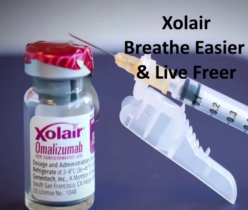
Asthma is a chronic respiratory condition marked by episodes of airway obstruction, causing breathing difficulties. Recognizing the signs and symptoms of asthma is crucial for effective management and treatment. This article aims to provide a comprehensive understanding of asthma symptoms, how to identify them, and the necessary actions to take in managing the condition.
Key Takeaways
- Recognize common asthma symptoms such as wheezing, shortness of breath, chest tightness, and coughing, particularly at night or after exercise.
- Identify personal asthma triggers to avoid episodes and manage symptoms more effectively.
- Understand the early warning signs of an asthma attack, including increased mucus production and feeling unusually tired, to prevent worsening conditions.
- Seek immediate medical help if experiencing severe asthma symptoms like difficulty breathing, blue lips or fingernails, or a rapid worsening of symptoms.
- Regularly review and adjust your asthma action plan with your healthcare provider to ensure effective management of the condition.
Understanding Asthma Symptoms

Recognizing Common Symptoms
Asthma symptoms can vary widely but typically include wheezing, shortness of breath, chest tightness, and coughing, especially at night or early in the morning. These symptoms can help in identifying when an asthma attack is likely to occur and when to use quick-relief medications.
Identifying Personal Triggers
Identifying personal triggers is crucial for managing asthma effectively. Common triggers include allergens like pollen and dust, respiratory infections, cold air, physical activity, and smoke. Keeping a detailed diary of symptoms and triggers can help in managing asthma more proactively.
Managing Symptoms Daily
Daily management of asthma involves regular use of controller medications, avoiding known triggers, and monitoring symptoms. It’s important to have an action plan in place, which includes knowing how to use inhalers correctly and recognizing when to seek medical help.
Note: Regular check-ups with a healthcare provider are essential to adjust treatment plans as needed and to ensure medications are working effectively.
Early Warning Signs of an Asthma Attack
Recognizing Early Changes
Early warning signs of an asthma attack can be subtle but are crucial for preventing a full-blown episode. Increased use of quick-relief inhalers and low peak expiratory flow (PEF) readings are significant indicators. Recognizing these changes early can help manage the situation promptly.
Preventing Asthma Episodes
To prevent asthma episodes, it’s essential to understand and avoid personal triggers. Common triggers include allergens, cold air, and exercise. Maintaining a clean environment and having an Asthma Action Plan are proactive steps to minimize the risk of an attack.
Actions to Take During Early Signs
When early signs appear, immediate action can prevent worsening conditions. Start by using your prescribed quick-relief medication. If symptoms persist, seek medical advice without delay. Regularly updating your Asthma Action Plan with your healthcare provider ensures you are prepared to handle these situations effectively.
Recognizing Severe Asthma Symptoms

Identifying Emergency Symptoms
Shortness of breath, chest tightness, and rapid breathing are critical indicators of a severe asthma attack. Immediate action is necessary when these symptoms are accompanied by blue lips or fingernails and difficulty speaking or walking due to breathlessness.
When to Seek Medical Help
If symptoms escalate quickly and do not respond to quick-relief inhalers, it’s crucial to seek emergency medical attention. Recognize the signs that warrant a visit to the emergency room, such as a pale, sweaty face or severe chest pain.
Understanding Asthma Severity Levels
Asthma severity is categorized into four levels: mild intermittent, mild persistent, moderate persistent, and severe persistent. Understanding these levels helps in managing symptoms more effectively and preparing for potential severe attacks.
Asthma Symptoms in Different Populations

Symptoms in Children
Asthma is a prevalent chronic condition among children, significantly impacting their daily activities and quality of life. Children often exhibit symptoms like coughing, especially at night, wheezing, and shortness of breath. These symptoms can vary greatly in severity and frequency, making early recognition and management crucial.
Symptoms in Adults
Adults with asthma may experience a range of symptoms that can often be mistaken for other conditions. It’s important to recognize symptoms such as persistent coughing, wheezing, and difficulty breathing as potential signs of asthma. Adults may also experience unique triggers and complications, such as gynecomastia and eczema atopic dermatitis, which are less common in children.
Variations Across Demographics
Asthma symptoms and their severity can vary widely across different demographics. Factors such as race, gender, and environmental exposures play a significant role in the prevalence and manifestation of asthma symptoms. For instance, statistics show that asthma affects Black people more frequently than other races and is more prevalent in people assigned female at birth than in those assigned male.
Managing Asthma Symptoms Effectively

Using Quick-Relief Medications
Quick-relief medications, such as bronchodilators, are essential for stopping an asthma attack in its tracks. These medications should be readily accessible to anyone with asthma, especially during sudden flare-ups.
Long-Term Asthma Control Strategies
Long-term control medications are crucial for maintaining daily asthma management and preventing the frequency and severity of asthma attacks. These include inhaled corticosteroids and long-acting beta-agonists, which help reduce inflammation and keep the airways open.
Lifestyle Adjustments for Asthma Management
Making certain lifestyle changes can significantly aid in managing asthma symptoms. These adjustments include:
- Avoiding asthma triggers such as smoke, pollen, or pet dander.
- Maintaining a clean living environment to reduce allergens.
- Exercising regularly to strengthen the respiratory system.
It’s important to tailor these strategies to fit individual health needs and environmental conditions.
The Role of Diagnosis in Asthma Management

Importance of Accurate Diagnosis
Accurate diagnosis is crucial for effective asthma management. It ensures that the treatment plan is tailored to the individual’s specific condition, which can significantly improve the quality of life. Diagnosis typically involves a detailed medical history, physical examination, and various diagnostic tests.
Common Diagnostic Tests
Diagnostic tests are essential to confirm an asthma diagnosis. These may include:
- Spirometry measures the amount of air you can exhale after a deep breath and how quickly you can do it.
- Peak flow monitoring to measure how hard you can breathe out.
- Allergy testing to identify possible triggers.
- Bronchoprovocation test to measure how your lungs react to specific exposures or exercises.
Interpreting Test Results
Interpreting test results accurately is key to managing asthma effectively. Understanding these results helps in adjusting treatment plans and monitoring asthma control. Regular follow-ups with healthcare providers ensure that the management plan remains effective and responsive to the patient’s needs.
Creating an Asthma Action Plan

Designing a Personalized Plan
Creating a personalized asthma action plan involves collaboration between you and your healthcare provider. It outlines the steps to manage your asthma daily and during flare-ups. Ensure your plan is tailored to your specific needs and includes all necessary medications and actions.
Incorporating Medical Advice
Your asthma action plan should be grounded in professional medical advice. This plan will guide you on how to react to different asthma symptoms and manage your condition effectively. It’s crucial to update this plan during regular health check-ups or when your condition changes.
Regular Review and Adjustment
An effective asthma action plan requires regular review and adjustments to stay aligned with your health status. Make it a habit to discuss your asthma action plan with your healthcare provider during each visit, ensuring it remains effective and relevant.
Conclusion
In conclusion, recognizing the signs and symptoms of asthma is crucial for managing this chronic condition effectively. Early detection of warning signs can help prevent full-blown asthma attacks and reduce the severity of symptoms. By understanding the common symptoms such as increased mucus production, chest tightness, and wheezing, individuals can take timely action using quick-relief medications and consulting healthcare providers. Always be prepared with an asthma action plan and stay informed about your specific triggers and symptoms to maintain better control over your asthma and improve your quality of life.
Frequently Asked Questions
What are the common symptoms of asthma?
Common symptoms include shortness of breath, chest tightness or pain, wheezing, and coughing, especially at night or during exercise. Symptoms can vary in intensity and frequency among individuals.
How can I recognize the early signs of an asthma attack?
Early signs include increased mucus production, a runny or congested nose, itchy neck or chin, feeling tired or weak, and changes in posture such as raised shoulders. Recognizing these signs early can help prevent a full-blown asthma attack.
What actions should I take during early signs of an asthma attack?
During early signs, you should use your quick-relief inhaler as prescribed and follow your asthma action plan. If symptoms persist or worsen, seek medical attention immediately.
What are the emergency symptoms of a severe asthma attack?
Emergency symptoms include severe shortness of breath or gasping for air, chest tightness, pale or blue lips or fingernails, and difficulty walking or talking due to breathing difficulties. These symptoms require immediate medical attention.
How can I effectively manage my asthma symptoms daily?
Daily management includes avoiding known triggers, using prescribed medications such as quick-relief inhalers and long-term control medications, and making lifestyle adjustments like maintaining a healthy weight and exercising regularly.
Why is an accurate diagnosis important for asthma management?
An accurate diagnosis ensures that the treatment plan is appropriate for the type and severity of asthma, helping to prevent complications and improve overall asthma control. Common diagnostic tests include spirometry and peak flow measurements.




